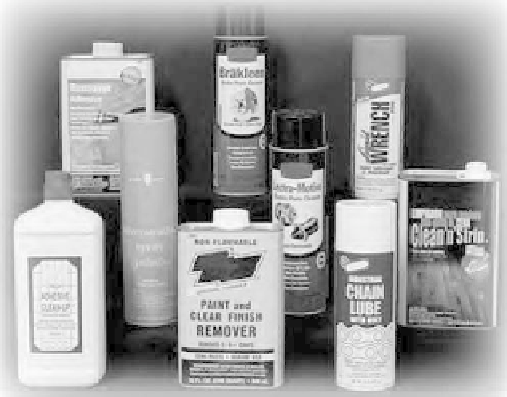Environmental Engineering Reference
In-Depth Information
FIGURE 7.3
Household products containing chlorinated solvents. (From United States Geological Survey (USGS),
Volatile
Organic Compounds in the Nation's Ground Water and Drinking-Water Supply Wells
, USGS Circular 1292, Reston,
VA, 2006.)
•
trans
-1,2-Dichloroethene (DCE)
• Vinyl chloride
• 1,1,1-Trichloroethane (TCA)
• 1,1-Dichloroethene (DCE)
• Methylene chloride
• Carbon tetrachloride
• Chloroform
• Chlorobenzene
• 1,2-Dichlorobenzene
Many VOCs halogenated with chlorine have high electro negativities and form rather
strong bonds with the carbon atoms in their structure. In addition, the substitution of a
hydrogen atom by a chlorine atom enhances the inertness of the molecule. This inertness
results in many halogenated VOCs being rather persistent when released into the envi-
ronment. A degradation sequence, however, does exist for a group of the most commonly
used chlorinated solvents, and is shown in Figure 7.4. This degradation sequence becomes
very important when we discuss the fate and migration of these compounds in the next
chapter.
Table 7.3 lists the chemical formulas and carcinogenicity ratings of selected chlorinated
solvents (USEPA 2009b).
Health effects from overexposure to most chlorinated solvents include lung irrita-
tion, difficulty walking and speaking, poor coordination, dizziness, headache, nausea,
sleepiness, unconsciousness, and even death (ATSDR 1997a, 2003a, 2006).

Search WWH ::

Custom Search